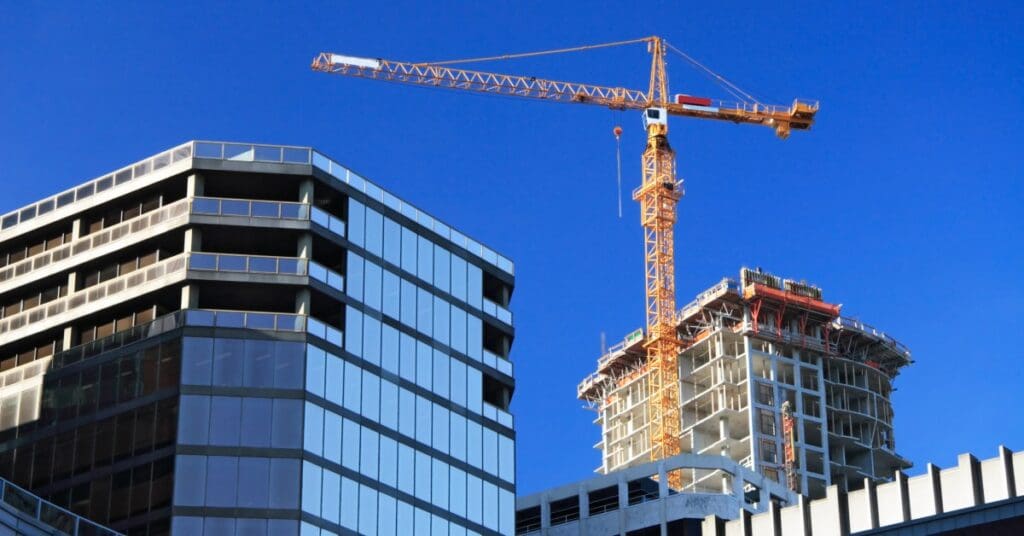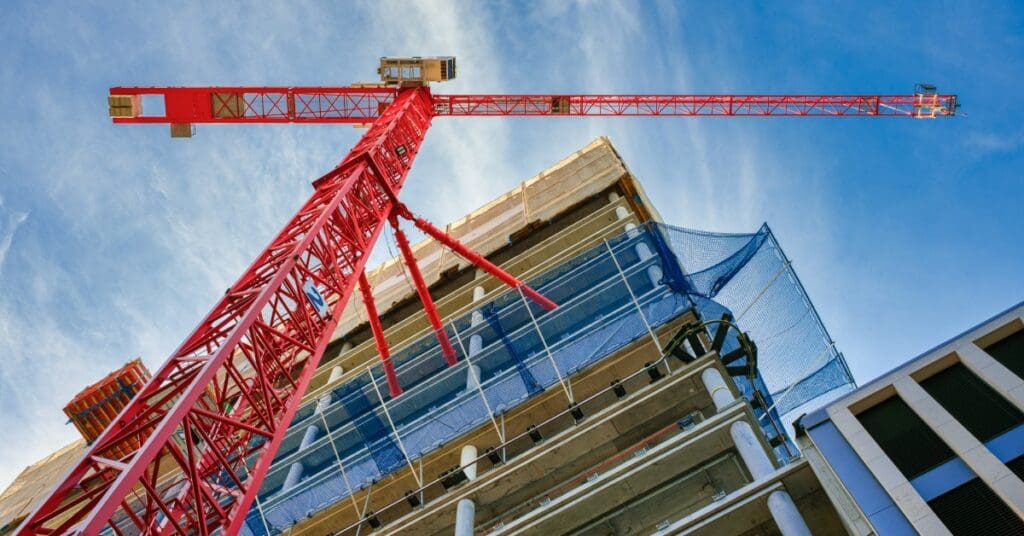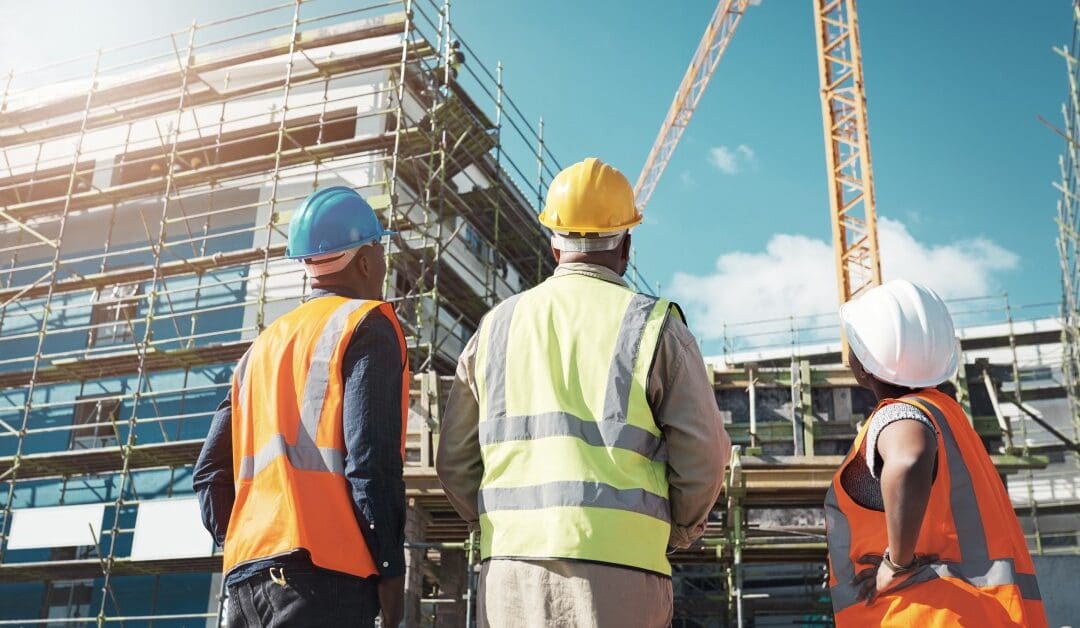Urban construction projects always come with obstacles. Contractors have to work in narrow spaces, so they must use precise equipment that won’t disturb the environment.
Space constraints, regulatory requirements, and safety concerns all factor into equipment selection and project planning. For contractors working in city centers, it’s important to know the ways cranes can tackle urban construction challenges.
Space Constraints and Compact Solutions
Urban jobsites rarely offer the luxury of expansive work areas, so contractors have to work around space constraints. Contractors have to maximize productivity within tight confines while upholding safety standards.
Tower Cranes for Vertical Projects
Tower cranes have revolutionized high-rise construction in urban environments. The cranes require minimal ground space, provide extensive reach, and offer high lifting capabilities. The fixed position allows workers to move other equipment around the crane, facilitating a more efficient workflow.
Modern tower cranes have advanced control systems that reduce cycle times. Variable speed controls and load monitoring systems are valuable features that help operators work safely in confined spaces.
All-Terrain and City Cranes
Tower cranes aren’t always a feasible option. Other urban projects may implement all-terrain and city cranes for a mobile and versatile jobsite. City cranes are specifically designed for urban work because they feature compact dimensions that allow navigation through narrow streets.
These cranes can move quickly around the job site, making them ideal if the project needs multiple lifting points. Their ability to travel between locations reduces mobilization costs and ensures the team adheres to the project timeline.
Navigating Regulatory Requirements
One of the biggest challenges of urban construction is the strict regulatory frameworks that govern every part of the project. From noise levels to operating hours, local regulatory offices have to approve and enforce these rules. Crane operations must comply with municipal codes, safety regulations, and environmental standards.

Permit and Planning Process
Successful urban crane operations begin with thorough planning and proper permitting. Contractors must work closely with local authorities to obtain necessary approvals for crane installation, operation zones, and traffic management plans.
Permits are necessary for urban construction projects, but crane rental companies can provide permitting assistance and help teams comply with regulations. With this support, contractors can focus on the overall project and navigate the approval process with ease.
Noise and Environmental Considerations
Urban environments demand sensitivity to noise pollution and environmental impact. Advanced crane technologies now incorporate noise reduction features and emissions controls that help projects meet strict urban standards.
Electric and hybrid crane options are becoming increasingly popular for urban projects, offering reduced emissions and lower noise levels. These technologies align with municipal sustainability goals while maintaining operational efficiency.
Safety in High-Density Areas
Urban construction sites operate in close proximity to pedestrians, traffic, and occupied buildings. This proximity requires enhanced safety measures and specialized equipment features.
Advanced Safety Systems
Modern cranes utilize sophisticated safety technologies that include load moment indicators, anti-collision systems, and remote monitoring capabilities. These features help prevent accidents and safety issues for workers and the public. With these protections in place, the site can remain productive and safe.
Real-time monitoring systems allow project managers to track crane operations remotely, ensuring compliance with safety protocols and identifying issues promptly. This proactive approach enhances overall project safety and efficiency.
Traffic and Pedestrian Management
Crane operations in urban settings require careful coordination with traffic management and pedestrian safety measures. Strategic planning ensures that lifting operations minimize disruption to city flow while maintaining safety standards.
Contractors commonly work with traffic management specialists. They work together to develop comprehensive plans that balance the construction project’s demands with urban traffic requirements. Implementing a collaborative approach is a great way to uphold community relations and sustain project progress.
Technology Integration for Urban Efficiency
Modern crane technology leverages digital tools and automation to enhance performance in challenging urban environments. With those integrations in place, the work site can continue its efficient work.

Remote Monitoring and Control
Monitoring capabilities allow operators and project managers to track performance, maintenance needs, and safety parameters in real time. The technology enables proactive decision-making and reduces downtime.
Remote diagnostics help identify potential issues before they impact operations, allowing for scheduled maintenance that minimizes project disruption. The approach is valuable in urban settings because equipment downtime and repairs can have negative effects on the project timeline.
GPS and Precision Positioning
GPS technology and precision positioning systems help crane operators work more efficiently in tight urban spaces. These systems provide accurate load positioning and help operators navigate complex lift paths safely and efficiently.
Precision controls reduce cycle times and improve accuracy, leading to better project outcomes and enhanced profitability. For contractors managing multiple urban projects, efficiency gains compound over time.
Cost Management and ROI Optimization
Urban construction projects often operate under tight budget constraints, making cost management critical to project success. With this in mind, many construction managers have to take specific considerations throughout the project.
Equipment Selection Strategy
Choosing the right crane for urban projects requires balancing capability, cost, and site constraints. Contractors who understand the trade-offs between different crane types can optimize their equipment selections for maximum profitability.
Working with experienced crane rental partners helps contractors access specialized urban equipment without the capital investment required for ownership. This approach provides flexibility while managing costs effectively.
Productivity Maximization
Crane operations benefit from new technologies that can maximize productivity within tight timeframes. Features like faster line speeds, improved load charts, and enhanced operator visibility help crews accomplish more work within typical urban operating windows.
Conduct Success Construction Projects in Urban Markets
Urban construction presents challenges, but crane technology provides solutions that enable contractors to thrive in these demanding environments. Success requires understanding how equipment capabilities align with project requirements and regulatory constraints.
Crane rentals don’t have to be tough to manage. With Heave Ho! Crane & Rigging, you can find the best crane for the project. From urban to rural spaces, our Louisiana crane service will help you overcome various obstacles. Contact us today to learn how our cranes and expertise can elevate your construction projects to new heights.

